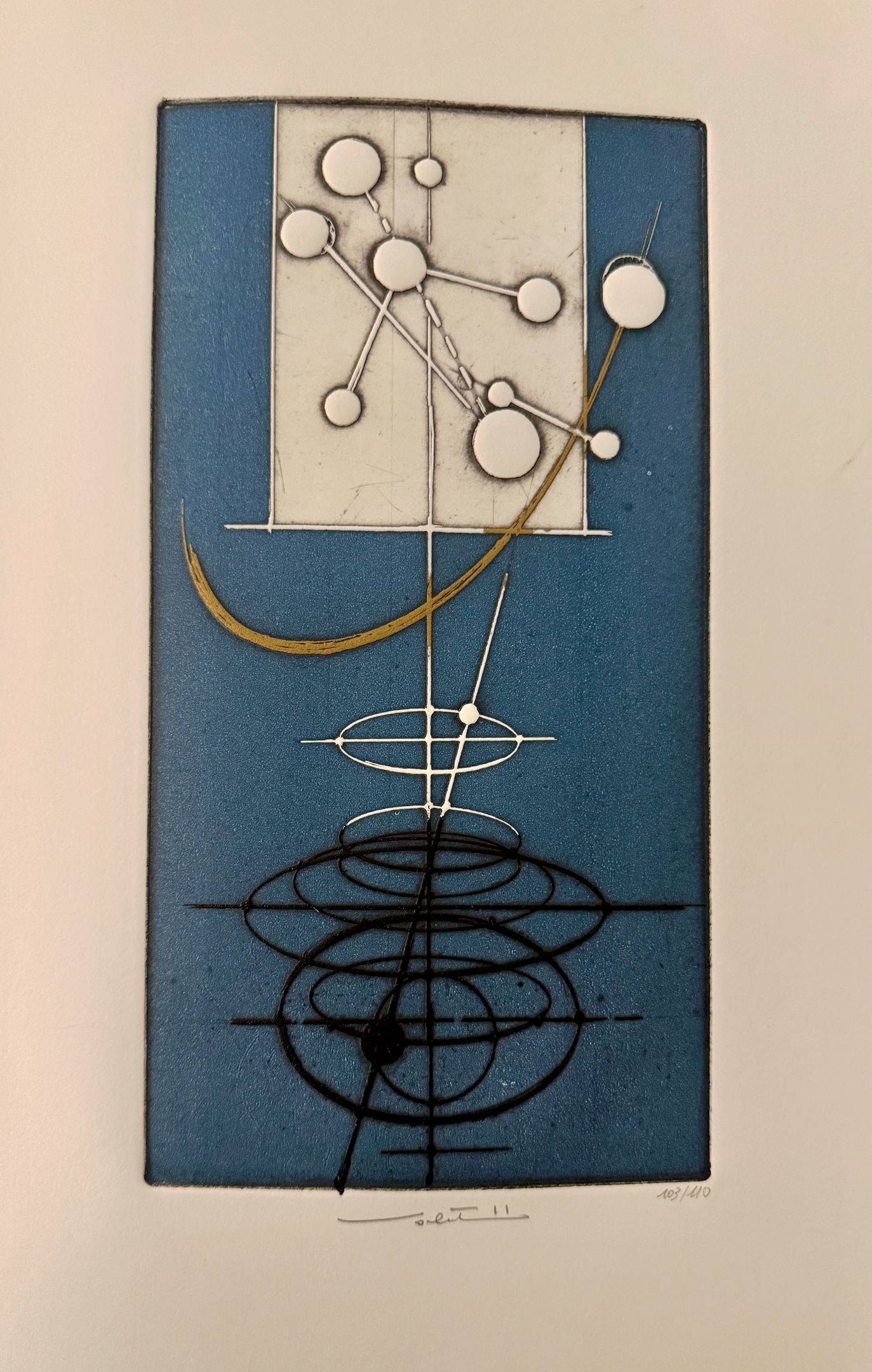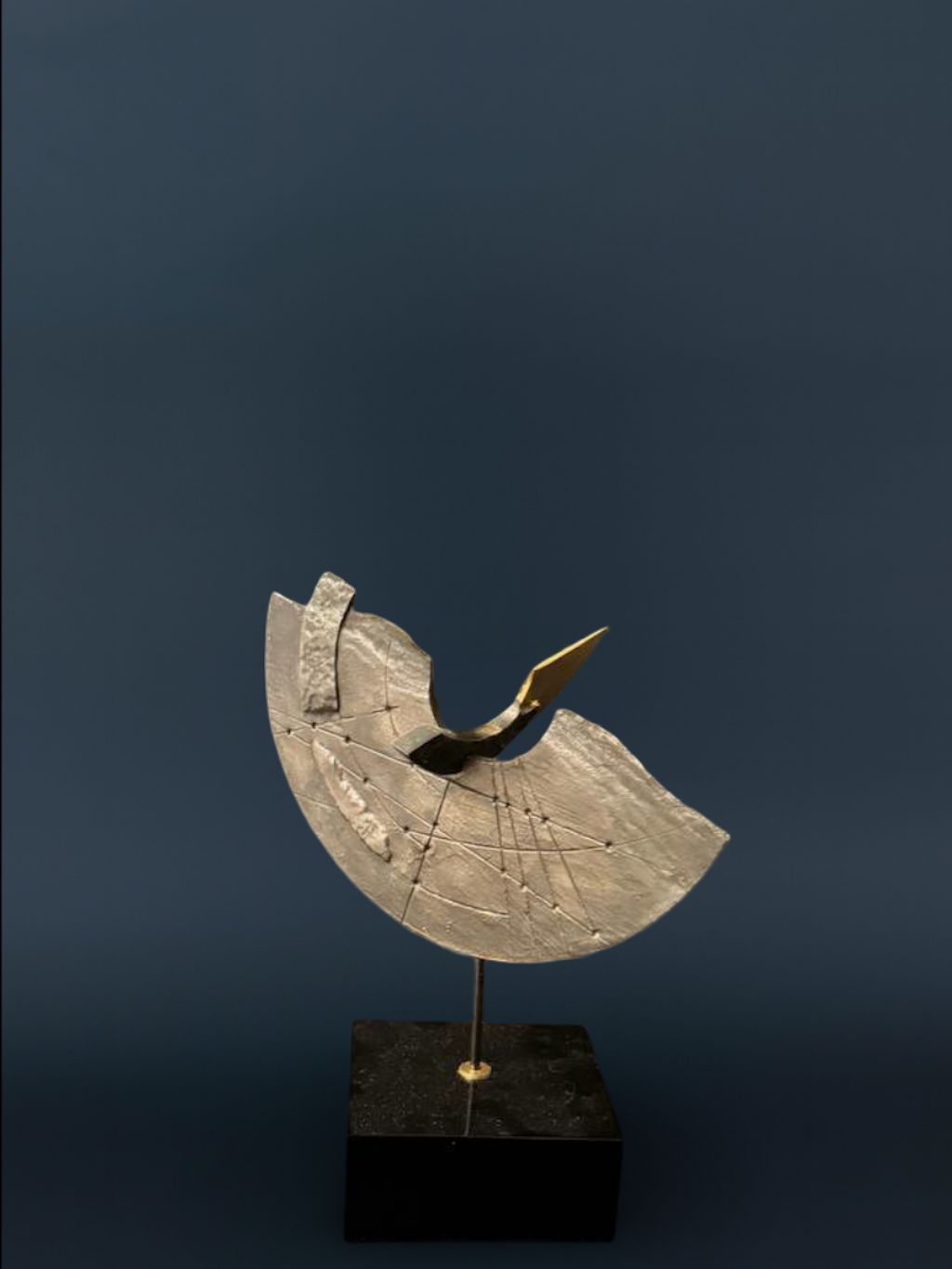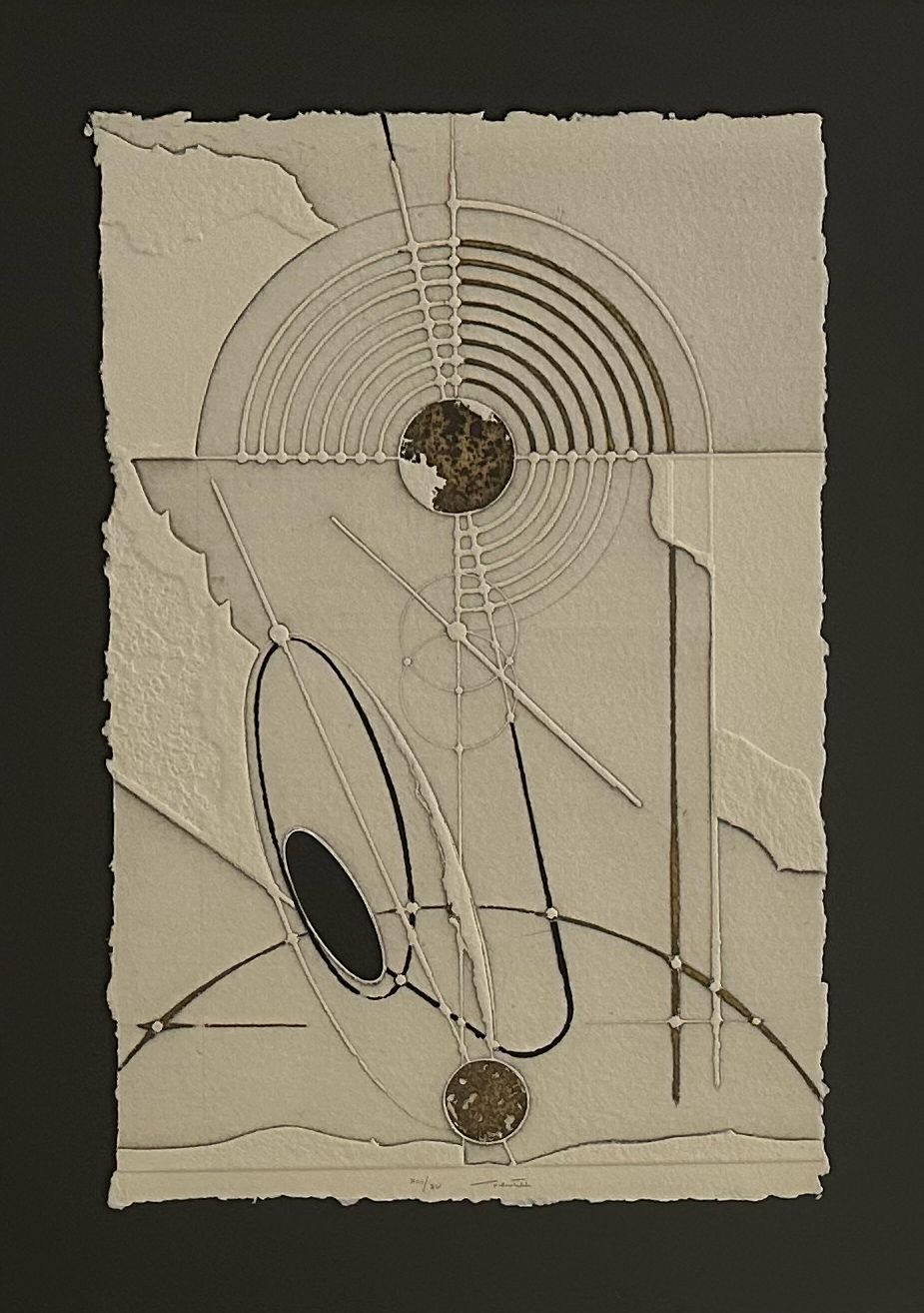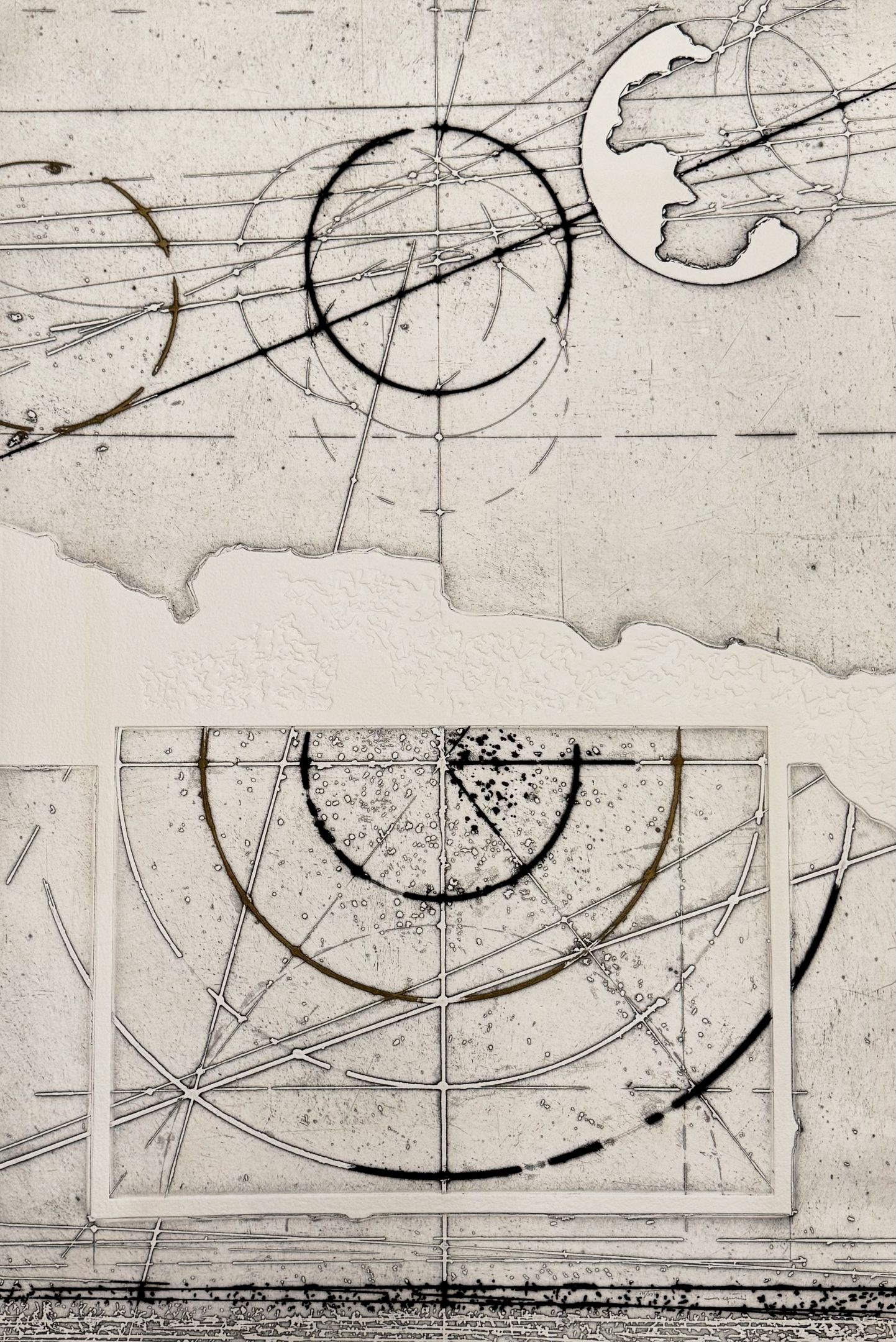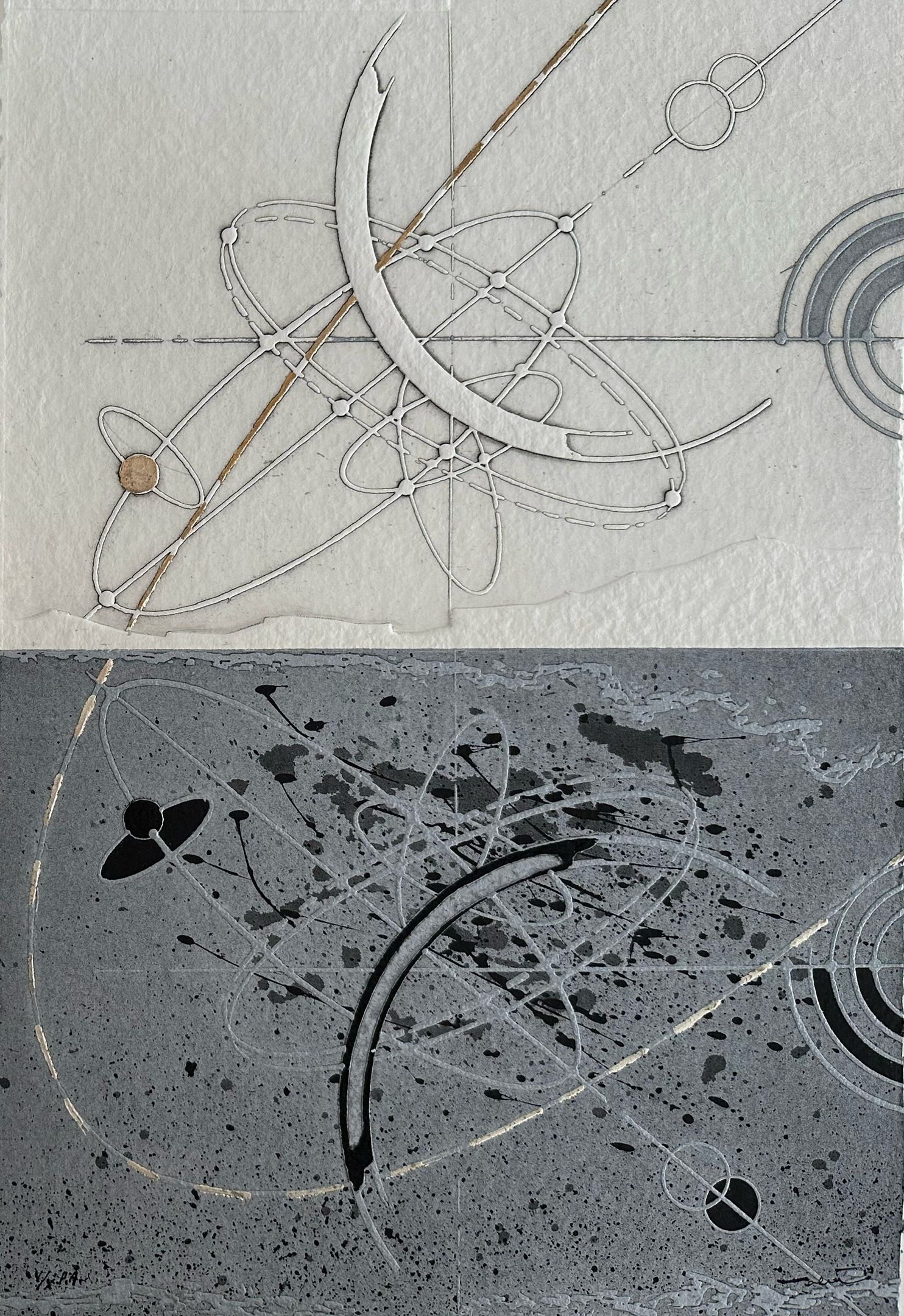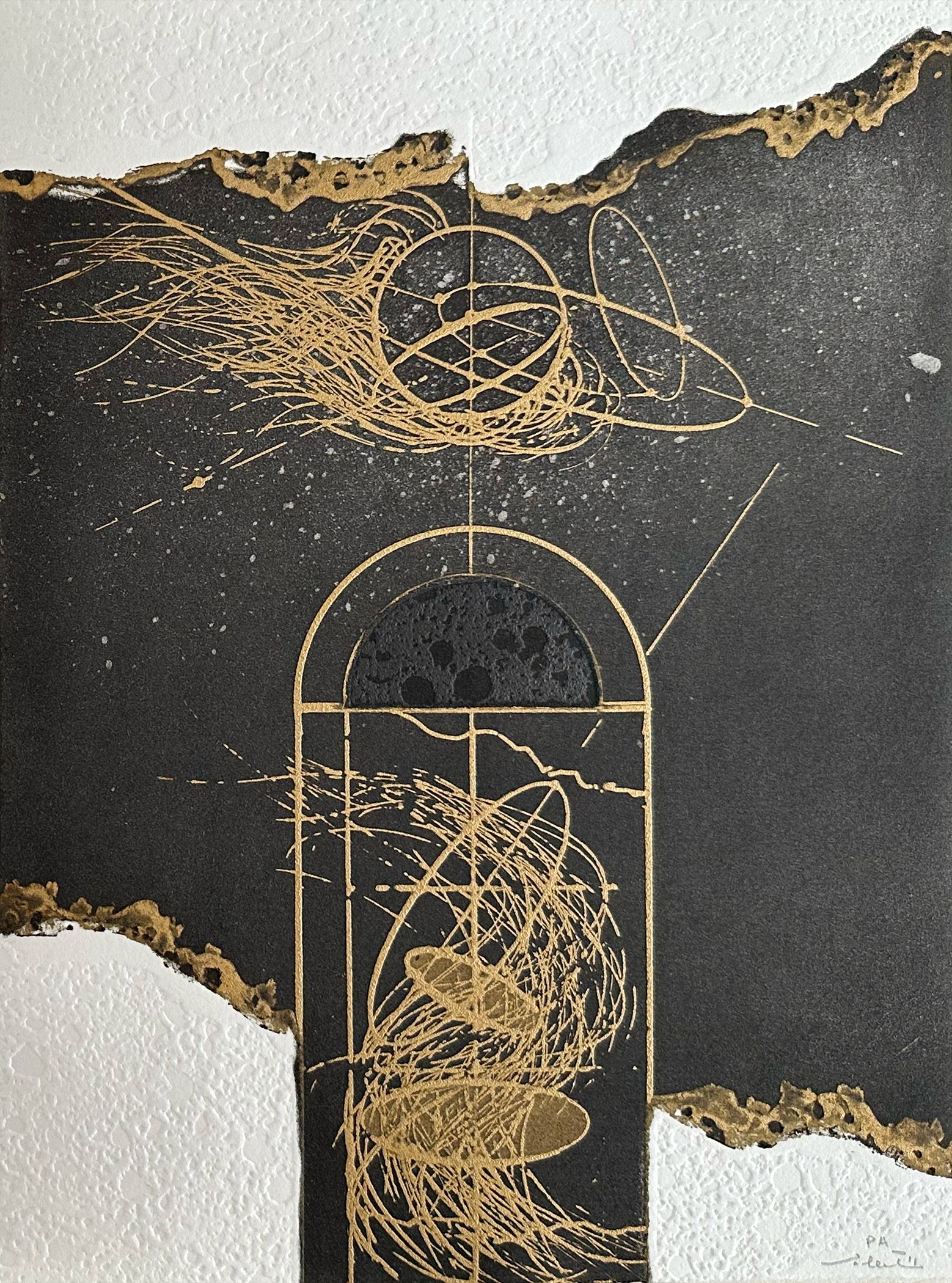
Walter Valentini
Api
Vaisilisa, art-curator
— In Api, there is a contemplative exchange between geometry and language. The book’s engravings unfold like celestial diagrams, tracing delicate orbits and intersections that mirror the rhythm of Luzi’s verse. Valentini’s lines seem to breathe with quiet precision, transforming the printed page into a space of balance and thought.
The refined textures and subtle reliefs give the work a tactile serenity, as though the surface itself were recording traces of time and movement. Each composition feels suspended between mathematics and emotion — a search for equilibrium within abstraction. The harmony between Valentini’s visual order and Luzi’s lyrical tone reveals a shared pursuit of clarity and transcendence.
Api emerges as a meditation on creation and structure, where the boundaries between drawing and poetry dissolve. It invites the viewer to read form as meaning, to listen to the silence between lines. Valentini’s restrained vision turns the page into a contemplative field — a place where geometry becomes language, and stillness speaks.
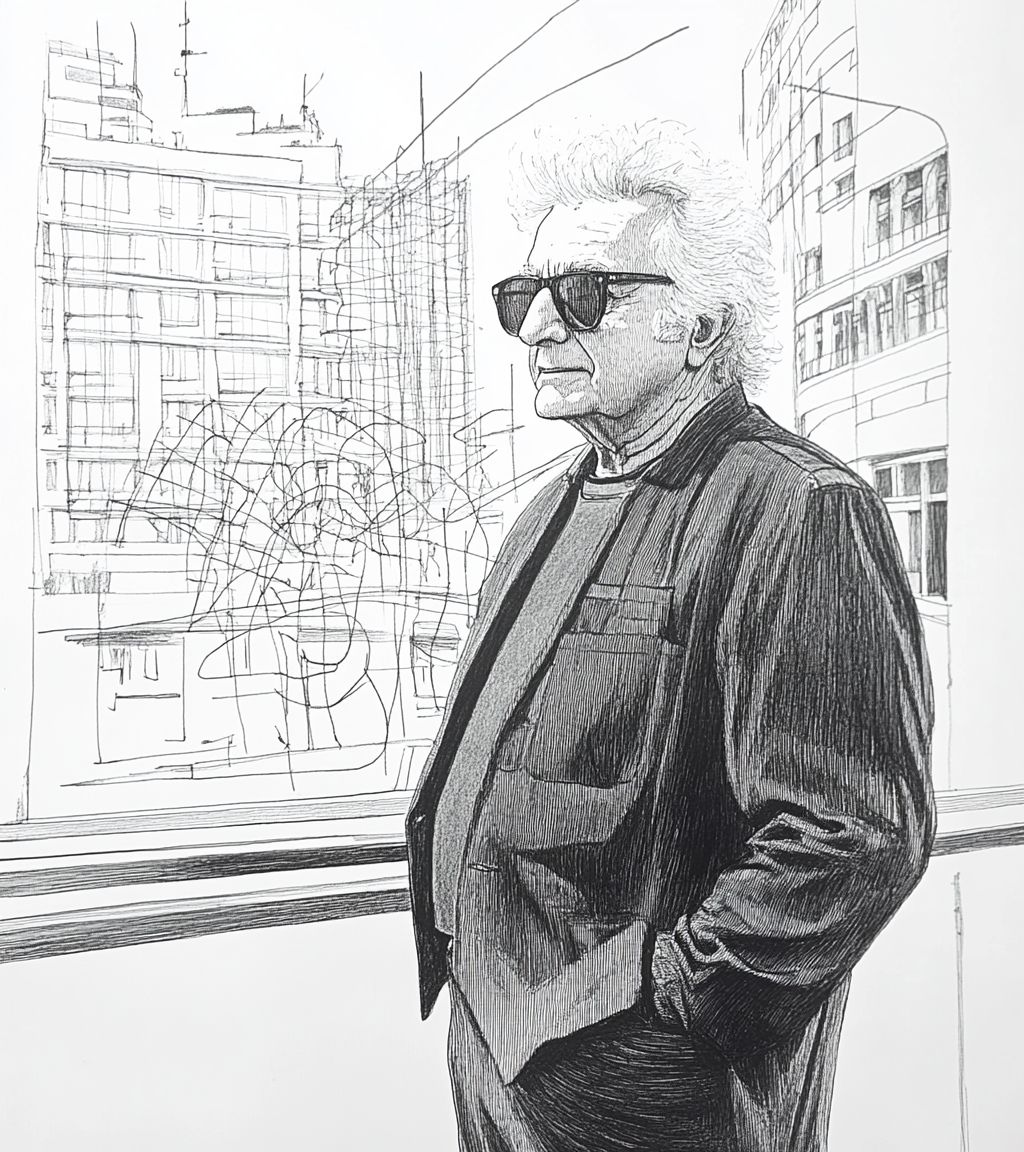
Walter Valentini’s work is known for its geometric abstraction, characterized by architectural structures, circular forms, lines, and symbolic motifs. He explored metaphysical ideas such as time, space, and order through rigorous compositions that evoke celestial mechanics, Renaissance perspective, and cosmological harmony.

